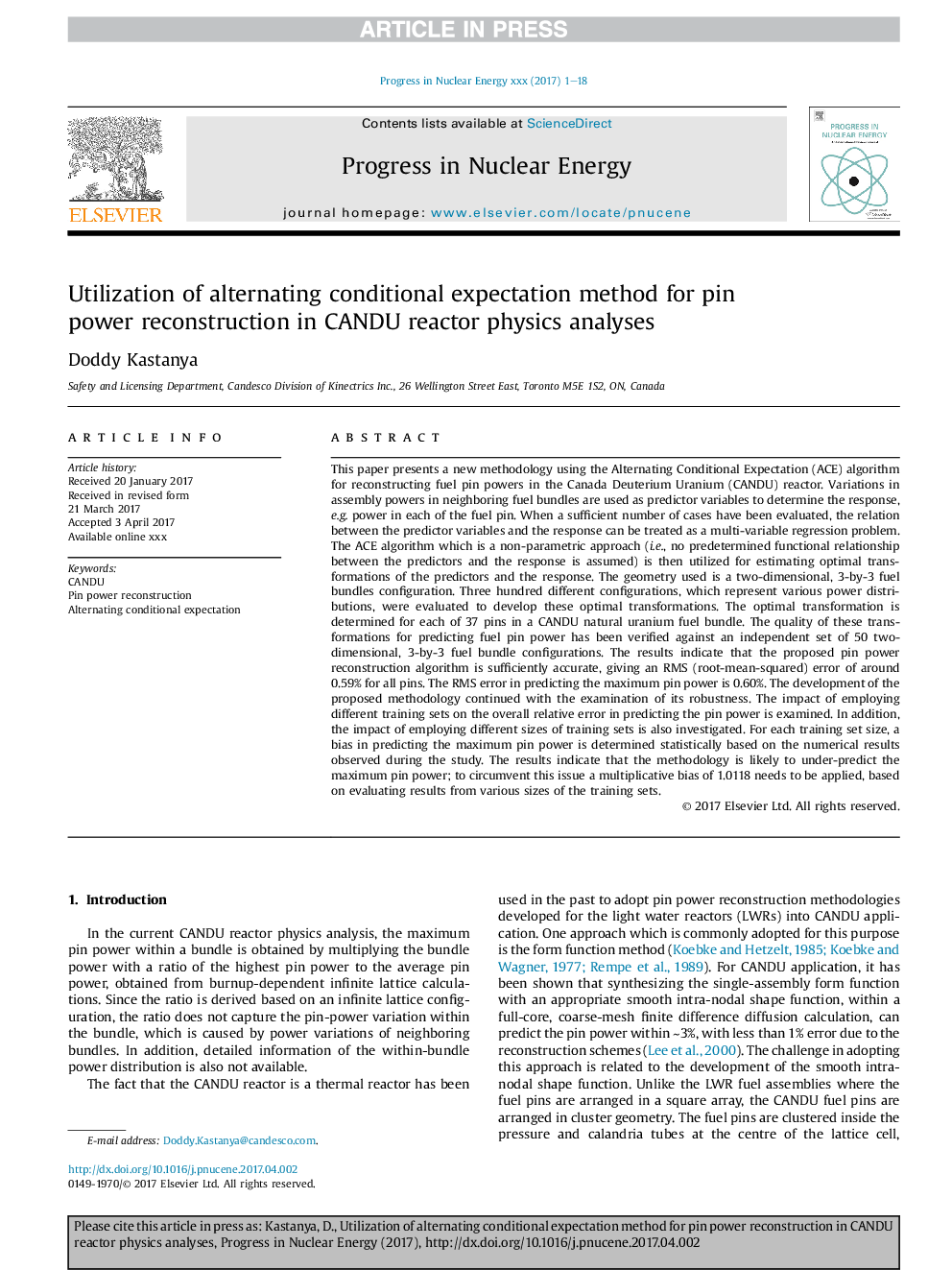| کد مقاله | کد نشریه | سال انتشار | مقاله انگلیسی | نسخه تمام متن |
|---|---|---|---|---|
| 5478065 | 1521740 | 2017 | 18 صفحه PDF | دانلود رایگان |
عنوان انگلیسی مقاله ISI
Utilization of alternating conditional expectation method for pin power reconstruction in CANDU reactor physics analyses
دانلود مقاله + سفارش ترجمه
دانلود مقاله ISI انگلیسی
رایگان برای ایرانیان
کلمات کلیدی
موضوعات مرتبط
مهندسی و علوم پایه
مهندسی انرژی
مهندسی انرژی و فناوری های برق
پیش نمایش صفحه اول مقاله

چکیده انگلیسی
This paper presents a new methodology using the Alternating Conditional Expectation (ACE) algorithm for reconstructing fuel pin powers in the Canada Deuterium Uranium (CANDU) reactor. Variations in assembly powers in neighboring fuel bundles are used as predictor variables to determine the response, e.g. power in each of the fuel pin. When a sufficient number of cases have been evaluated, the relation between the predictor variables and the response can be treated as a multi-variable regression problem. The ACE algorithm which is a non-parametric approach (i.e., no predetermined functional relationship between the predictors and the response is assumed) is then utilized for estimating optimal transformations of the predictors and the response. The geometry used is a two-dimensional, 3-by-3 fuel bundles configuration. Three hundred different configurations, which represent various power distributions, were evaluated to develop these optimal transformations. The optimal transformation is determined for each of 37 pins in a CANDU natural uranium fuel bundle. The quality of these transformations for predicting fuel pin power has been verified against an independent set of 50 two-dimensional, 3-by-3 fuel bundle configurations. The results indicate that the proposed pin power reconstruction algorithm is sufficiently accurate, giving an RMS (root-mean-squared) error of around 0.59% for all pins. The RMS error in predicting the maximum pin power is 0.60%. The development of the proposed methodology continued with the examination of its robustness. The impact of employing different training sets on the overall relative error in predicting the pin power is examined. In addition, the impact of employing different sizes of training sets is also investigated. For each training set size, a bias in predicting the maximum pin power is determined statistically based on the numerical results observed during the study. The results indicate that the methodology is likely to under-predict the maximum pin power; to circumvent this issue a multiplicative bias of 1.0118 needs to be applied, based on evaluating results from various sizes of the training sets.
ناشر
Database: Elsevier - ScienceDirect (ساینس دایرکت)
Journal: Progress in Nuclear Energy - Volume 98, July 2017, Pages 248-265
Journal: Progress in Nuclear Energy - Volume 98, July 2017, Pages 248-265
نویسندگان
Doddy Kastanya,